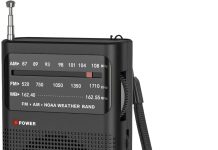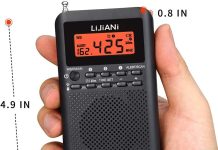Are you eager to enhance your knowledge of emergency radio protocols and procedures? Look no further! This article will provide you with valuable insights and resources to expand your understanding of this critical field. Discover the various avenues available for learning, including online courses, training programs, and interactive resources. Whether you are a beginner or seeking advanced knowledge, this article will guide you towards valuable resources that will help you master emergency radio protocols and procedures. So, let’s embark on this informative journey together!
Review contents
Emergency Radio Protocols and Procedures
Understanding the Importance
When facing an emergency situation, effective communication can make all the difference. Emergency radio protocols and procedures are crucial in ensuring clear and efficient communication during critical situations. By understanding and adhering to these protocols, emergency responders can effectively coordinate their efforts, share important information, and ensure the safety and well-being of those involved.
Overview of Emergency Radio Systems
Emergency radio systems serve as the backbone of communication for responders in various emergency situations. These systems provide a dedicated channel for emergency communications and are designed to prioritize critical messages, ensuring that important information is delivered promptly. Depending on the location and scale of the emergency, different types of emergency radio systems may be used, such as trunked radio systems, digital mobile radio (DMR), or the Project 25 (P25) standard.
Types of Emergency Radio Protocols
Emergency radio protocols are a set of guidelines and procedures that ensure effective and standardized communication during emergencies. There are several types of emergency radio protocols used worldwide, including the Incident Command System (ICS), National Incident Management Assistance Teams (IMAT), and the National Interoperability Field Operations Guide (NIFOG). These protocols provide a framework for responders to coordinate their actions, allocate resources, and communicate critical information across different agencies and jurisdictions.
Essential Equipment and Terminology
To effectively participate in emergency communications, it is essential to understand the equipment and terminology used in emergency radio systems. Some common equipment includes handheld radios, base stations, repeaters, and antennas. Familiarizing yourself with the terminology, such as channels, frequencies, call signs, and codes, will enable you to communicate clearly and efficiently over the emergency radio system.
Standard Operating Procedures (SOPs)
Standard Operating Procedures (SOPs) outline step-by-step instructions on how to perform specific tasks or operations. In the context of emergency radio communications, having SOPs in place ensures that responders follow a consistent and organized approach when using the radio system. SOPs cover various aspects, including radio usage protocols, emergency codes and signals, radio etiquette, and emergency traffic management.
Training and Certification Programs
To learn about emergency radio protocols and procedures, there are various training and certification programs available. These programs provide comprehensive knowledge and practical skills needed to effectively operate and communicate over emergency radio systems. They cover topics such as radio operations, emergency communication techniques, incident management, and protocol adherence. Examples of recognized training and certification programs include the National Incident Management System (NIMS) and the National Association for Amateur Radio (ARRL) courses.
Online Resources for Learning
The internet provides a vast range of resources that can help you learn about emergency radio protocols and procedures. Numerous websites, forums, and online courses offer valuable information, tutorials, and interactive materials to enhance your understanding. Websites like the Federal Emergency Management Agency (FEMA) and the National Association of State EMS Officials (NASEMSO) provide access to guidelines, manuals, and training materials related to emergency radio communications.
Participation in Emergency Simulations
To gain hands-on experience and practice emergency radio protocols, participating in emergency simulations is highly recommended. These simulated exercises allow individuals or teams to simulate real-life emergency scenarios and practice their communication skills using radio systems. Simulations can take the form of tabletop exercises, field exercises, or even full-scale drills. By engaging in these simulations, you can assess your abilities, identify areas for improvement, and gain confidence in your ability to effectively communicate during emergencies.
Networking and Knowledge Sharing
Connecting with like-minded individuals involved in emergency radio communications can be invaluable for learning and staying up-to-date with the latest protocols and procedures. Joining professional associations, attending conferences, and participating in online communities or forums can provide opportunities for networking and knowledge sharing. Engaging in discussions and exchanging experiences with others working in the field can broaden your understanding and expose you to diverse perspectives and best practices.
Continuing Education and Professional Development
As with any field, continuing education and professional development are essential in emergency radio communications. Stay updated with new developments, technologies, and protocols by participating in refresher courses, workshops, and conferences. Continuously enhancing your skills and knowledge will not only ensure your effectiveness as a responder but will also contribute to the improvement and advancement of emergency radio protocols and procedures.
Learning about emergency radio protocols and procedures is a continuous journey that requires dedication, ongoing practice, and a commitment to professional growth. By understanding the importance of these protocols, familiarizing yourself with the equipment and terminology, and participating in training programs and simulations, you can become a proficient and invaluable asset in emergency radio communications. Remember to take advantage of online resources, network with professionals, and remain committed to continuing education to stay at the forefront of this essential field.




























